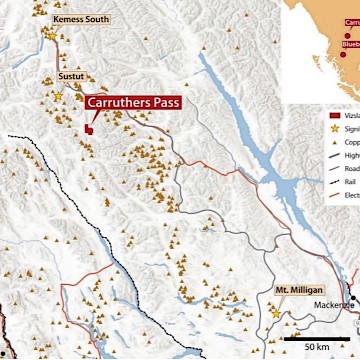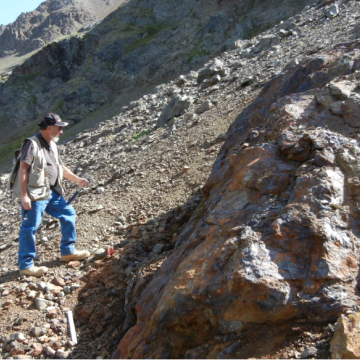Located in a region of north-central British Columbia rich with copper deposits of various styles, the Carruthers Pass Project (the Project) is ripe for discovery. The Project was originally staked to explore for the source of a large, 5m x 3m x 3m boulder of high-grade copper and zinc massive sulphide mineralization sticking out of a large scree slope. This boulder was first discovered in 1997 by Phelps Dodge while following up a new release of regional geochemical survey results. Thinner zones of high-grade copper and zinc mineralization were subsequently discovered in place in the steep cliffs above the boulder and the general area is now known as the Boulder Zone. Massive sulphide mineralization at the Boulder Zone is thought to belong to the Besshi-type of Volcanogenic Massive Sulphide deposits. At Carruthers Pass, the shale and volcaniclastic host rocks for the mineralization belong to the Dewar formation of the Upper Triassic Takla Group.
Exploration on the Project is relatively immature, with only 14 historical drill holes totalling 2,191m completed in three previous drilling campaigns, the last of which was in 2011. This is despite the presence of many kilometres of inferred sub-crop of the target horizon, and a 5 km long northwesterly trending soil geochemistry anomaly enriched in copper, zinc and other metals.
Vizsla Copper is earning a 60% interest in the Project from Cariboo Rose Resources Ltd. through a series of cash and share payments and exploration expenditures over a five-year period that began in 2021.



